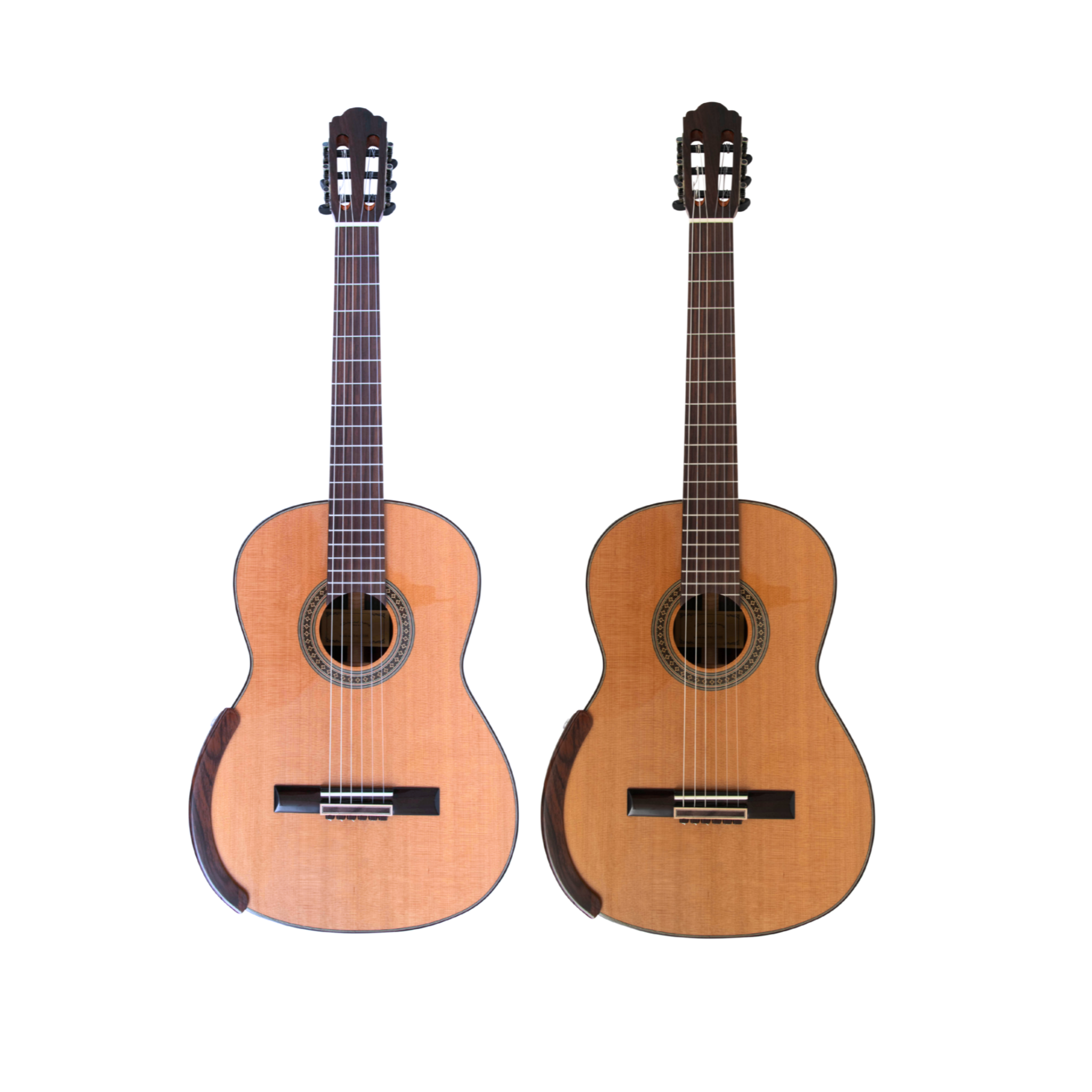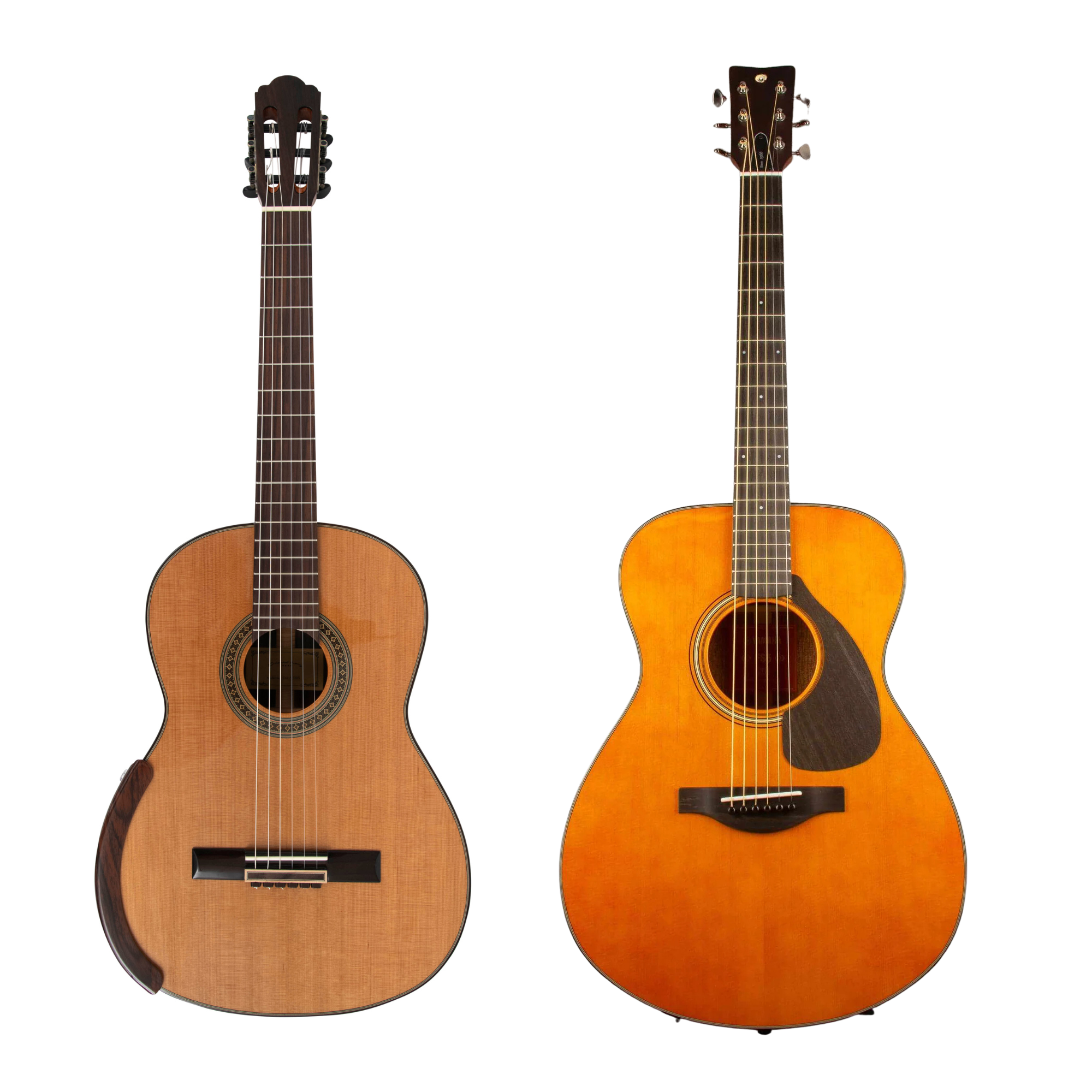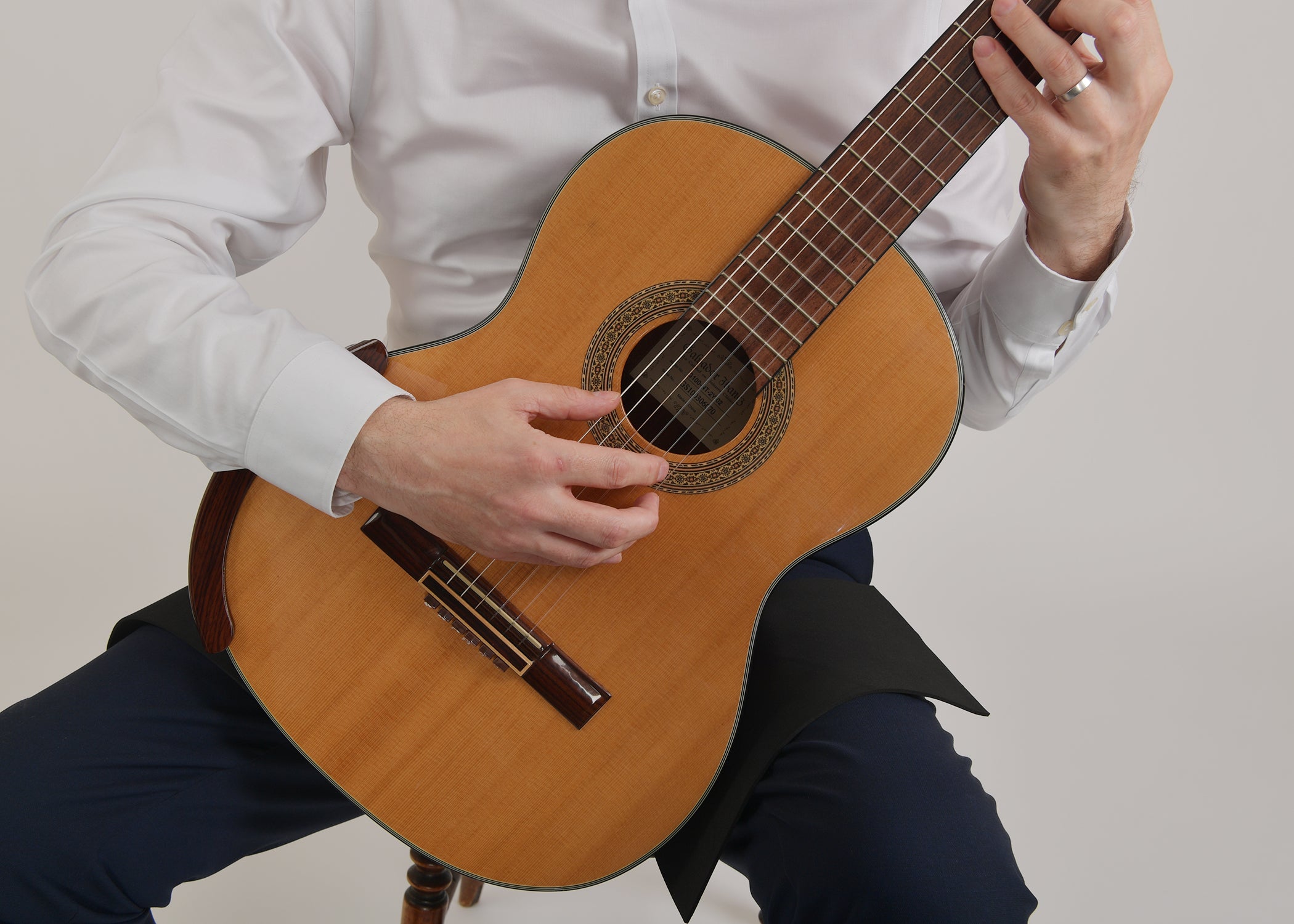The terms classical guitar, Spanish guitar, and concert guitar all refer to the same instrument: a nylon-string guitar with a wide fingerboard, designed to be played with the fingers and without amplification. These guitars have long been associated with solo and chamber repertoire, but their role extends far beyond the concert hall. They are used throughout Latin America, Europe, and Asia in a variety of regional styles. While many players refer to the instrument as a classical guitar, others call it a Spanish guitar to reflect its origins, or a concert guitar when describing higher-end, luthier-built models suited for professional performance.
The design of the modern classical guitar can be traced back to Antonio de Torres Jurado, the 19th-century Spanish luthier whose innovations shaped the instrument as we know it today. He increased the body size to allow the top to vibrate more freely, making use of very thin soundboards and an internal system of fan bracing to distribute tension evenly. Torres also standardised many key features—such as a 650 mm scale length and a wider fingerboard—to improve playability and sound consistency. These dimensions are still used in most modern classical guitars.
A distinguishing feature of the classical guitar is its slotted headstock, inherited from earlier instruments such as the vihuela and baroque guitar. With the introduction of mechanical tuning machines in the 19th century, makers retained the slotted configuration, placing the machines on lateral shafts. Over time, many luthiers developed unique headstock designs to signal the identity of their instruments—some with ornate carvings or distinctive silhouettes that make them instantly recognisable.
The rosette is another iconic element of the classical guitar. Originally a structural reinforcement around the sound hole, it became a focal point for artistic expression. Inlay patterns were inspired by cathedral rose windows and evolved into a defining feature of each luthier’s visual signature. Today, the rosette remains a mark of craftsmanship and identity, varying from hand-mosaicked tiles to minimalist wood marquetry.
What sets the classical guitar apart is its tonal palette. It responds differently to each player’s touch and allows a wide dynamic range without amplification. Repertoire written for classical guitar often explores these qualities, using subtle variation in tone colour, attack, and phrasing. From the precision and phrasing required in works by Fernando Sor and Mauro Giuliani, to the warmth and lyricism found in the compositions of Francisco Tárrega, the classical guitar supports a wide range of styles.
As the instrument spread beyond Spain, it was shaped by new cultural influences. In Latin America, composers such as Agustín Barrios Mangoré, Heitor Villa-Lobos, and Leo Brouwer introduced new harmonic language, rhythms, and technical demands. Their music remains central to the classical guitar repertoire and illustrates how regional styles continue to shape the evolution of the instrument. In Brazil, the guitar became deeply connected to choro and samba. In Argentina, it found a place in tango and folklor traditions. Each region brought new ideas, tone, and playing techniques.
Throughout the 20th century, the classical guitar gained global recognition thanks to concert artists like Andrés Segovia, Julian Bream, and John Williams. Their interpretations helped elevate the instrument within the classical music world and brought attention to the work of individual luthiers. Today, players can choose from a wide range of guitars made by modern luthiers across Italy, Spain, Germany, France, the UK, Japan, and the US, each with subtle variations in construction style, tone, and feel.
Although mass-produced classical guitars are widely available, concert-level instruments are still handmade using time-honoured methods. These guitars are selected for their tonal separation, colour range, and balance across registers. Many players prefer cedar tops for their warmer, darker tone and quicker response, while others choose spruce for its clarity and long-term tonal development. The choice often depends on the repertoire, recording context, and personal preference.
The classical guitar continues to evolve, with makers experimenting with double tops, lattice bracing, and new materials. Still, the essence of the instrument remains tied to its tactile connection with the player, its quiet intimacy, and its ability to speak across cultures. From solo works and transcriptions to contemporary compositions and traditional forms, the guitar remains a vehicle for storytelling through sound.
At Alba GB, our collection of classical guitars includes full-size and 3/4-size nylon-string models suitable for both students and professionals. Each guitar is selected for its build quality, tonal balance, and playability, offering a solid foundation for developing the technique and sound that define classical guitar playing today.





Leave a comment
This site is protected by hCaptcha and the hCaptcha Privacy Policy and Terms of Service apply.